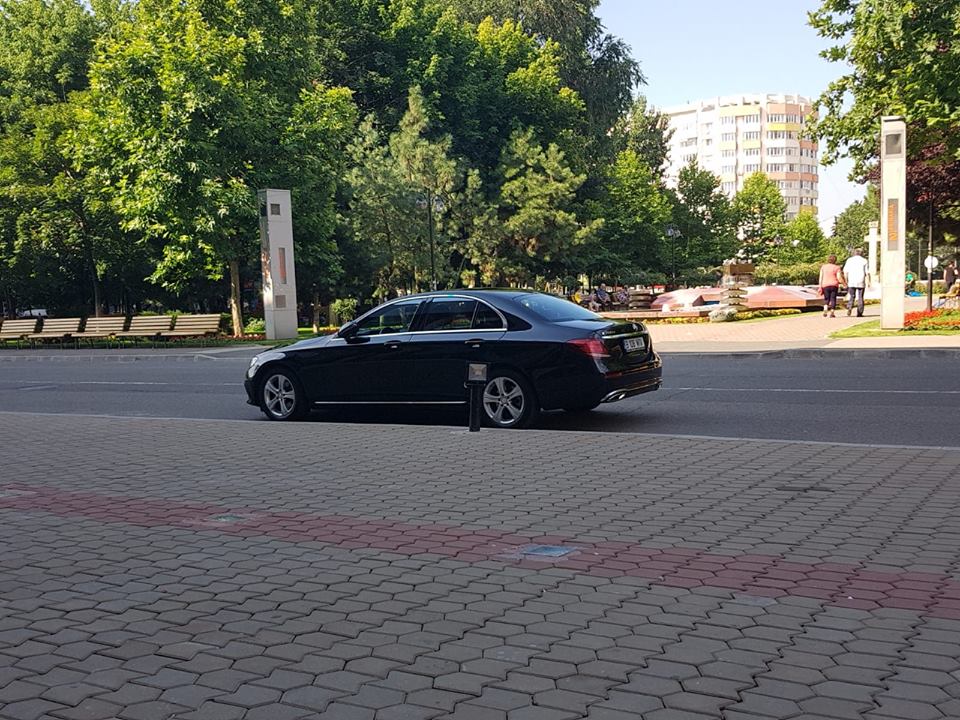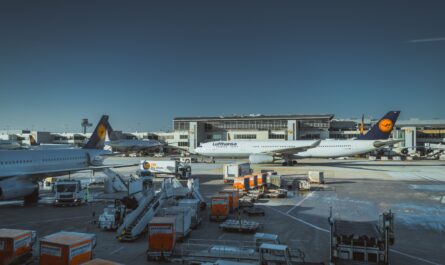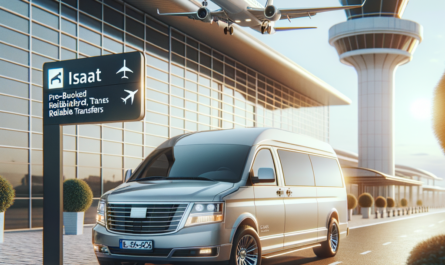TITLE: Skopje to Sofia transfers made easy: routes, timing, pricing, and local tips
META: Plan seamless Skopje to Sofia transfers: route, border tips, timing, costs, and vehicles. Practical advice, safety, and alternatives for a smooth Balkan trip.
## Introduction
Skip the hassle and plan smarter. If you’re considering Skopje to Sofia transfers, this guide covers the route, border checks, timing, vehicles, costs, and practical tips locals use. You’ll learn what to expect on travel day, how to avoid delays at Deve Bair–Gyueshevo, and when a private car or minivan makes sense over bus or rental. Let’s make your cross-border trip efficient, comfortable, and stress-free.
[An illustration of this concept would be helpful here]
## Skopje to Sofia transfers: route, timing, and border basics
### The fastest route explained
– Typical route: Skopje → Kumanovo → Kriva Palanka → Deve Bair (MK) / Gyueshevo (BG) → Kyustendil → Pernik → Sofia.
– Main corridor: `E871` (with local segments), about 245–260 km depending on pickup and drop-off points.
– Road profile: Mountain passes near Osogovo (around Kriva Palanka), then gentler terrain toward Sofia.
> Insider insight: Most drivers favor `E871` for reliable surfaces and predictable traffic. Detours are rare, but winter weather can slow travel in the Osogovo section.
### How long does it take?
– Typical door-to-door: 3.5–4.5 hours in normal conditions.
– Border variability: Off-peak waits are often 10–30 minutes; summer weekends and holidays can extend waits to 60–120 minutes.
– Data points:
– Google Maps route planning often shows 3:40–4:10 driving time without unusual delays (route and time-of-day dependent).
– Border congestion peaks Friday afternoons and Sunday evenings in summer.
Actionable tips:
1. Depart before 08:00 to miss mid-morning queues.
2. Avoid Friday 15:00–20:00 and Sunday 15:00–20:00 in July–August.
3. Build a 30–60 minute buffer for the border during peak season.
### Border checks and documents
– Bulgaria is in the EU and has air/sea Schengen entry, but land borders still have checks. Carry valid passports for all travelers.
– Visa requirements depend on nationality; verify ahead of time with the [Bulgarian Ministry of Foreign Affairs visa policy](https://www.mfa.bg/en/consularservices/travel-bulgaria/visa).
– If you self-drive, ensure your rental permits cross-border travel and includes a “Green Card” (international motor insurance).
– For official updates on Bulgarian border operations, consult the [Bulgarian Border Police travel advice](https://www.mvr.bg/gdgp).
### Seasonality and weather
– Winter (Dec–Feb): Snow and ice near Kriva Palanka/Osogovo can slow uphill/downhill segments. Carry warm layers and plan extra time.
– Summer (Jul–Aug): Heat can impact vehicle comfort; hydrate and schedule rest stops.
– Check live warnings via [Meteoalarm](https://www.meteoalarm.org/) before departure.
– For road conditions on the North Macedonian side, see the [Public Enterprise for State Roads updates](http://www.roads.org.mk).
[Visual example of the process]
## What to expect on your transfer day
### Door-to-door pickup
– Typical pickups: Hotels in central Skopje or Skopje International Airport (SKP). Drivers often track flights for on-time airport pickups. See the [Skopje Airport pickup guide](/skopje-airport-transfer).
– Drop-offs: Sofia neighborhoods, Sofia Airport (SOF), or hotels; drivers confirm exact addresses the day prior.
Process example:
1. Confirmation sent 24 hours before with driver contact and vehicle details.
2. 10-minute grace window at pickup; then departure via `E871`.
3. Short rest stop before or after the border as needed.
### Vehicle types and comfort
– Economic sedans: Best for 1–3 passengers with 2–3 medium suitcases.
– Minivans: Ideal for 4–7 passengers, families, or bulky luggage.
– Common amenities: Air conditioning, child seats on request, bottled water, and USB charging. Wi‑Fi availability varies by operator.
Practical tip: State your luggage and child seat needs during booking so the right vehicle arrives.
### Safety and compliance
– Choose licensed carriers with commercial insurance and vetted drivers.
– Seat belts are mandatory for all passengers in both countries.
– Drivers typically follow scheduled rest breaks every 2–2.5 hours.
### Sample itineraries (realistic scenarios)
– Family of 5 with two child seats:
– Pickup: 08:00 Skopje Center → Border: 10:00 → Sofia: 12:30–13:00 (one 20-minute stop, smooth border).
– Business traveler with 15:00 meeting in Sofia:
– Pickup: 09:30 SKP (after 08:30 arrival) → Buffer: 60–90 minutes for border → Arrival: ~13:30–14:00.
## Pricing, payment, and how costs compare
### Typical price ranges
– Private sedan: Often €180–€240 per vehicle, one way.
– Private minivan: Often €220–€300 per vehicle, one way.
– Factors: Season, pickup time window, holiday surcharges, and large luggage.
Context vs. alternatives:
– Intercity bus: About €20–€30 per person, 5–6 hours plus variability for border and stops. Schedules change; check reputable aggregators or station listings.
– Train: No regular direct cross-border passenger service on this route at present; connections, if any, are not time-efficient.
– Self-drive rental: Daily rental + cross-border fees + fuel + Bulgarian e‑vignette (if applicable to your vehicle class). See the [Bulgarian e‑vignette portal](https://www.bgtoll.bg/en).
### What’s included vs. extra
Usually included:
– Door-to-door ride, fuel, tolls, and standard border waiting.
– One brief comfort stop.
May cost extra:
– Additional detours or sightseeing stops.
– Excess luggage requiring a larger vehicle.
– Night surcharges (typically 22:00–06:00).
### Payment methods and receipts
– Common options: Major credit cards, cash in EUR, or bank transfer for corporate trips.
– Ask for a tax invoice in advance if your company requires it.
– For flexibility, review cancellation and change policies before confirming.
For a service overview and options, see the [private transfer service overview](/private-transfers).
## Tips, best practices, and common mistakes to avoid
### Best practices for a smooth border crossing
– Keep passports and visas handy; pack them in an easy-access pouch.
– Depart early on weekends and holidays.
– Confirm child seat needs in writing to avoid last-minute improvisation.
– Share your mobile number with the driver for coordination.
### Packing and comfort tips
– Bring water, light snacks, and layers for changing temperatures.
– Currency: North Macedonia uses MKD; Bulgaria uses BGN. Card acceptance is wide in Sofia, but small roadside stops may prefer cash.
– Handy stops: Kumanovo and Kriva Palanka (MK), Kyustendil (BG) for fuel and restrooms.
### Common mistakes to avoid
– Underestimating winter road conditions near Osogovo.
– Assuming Schengen rules apply to land borders—they do not here yet.
– Forgetting cross-border permissions and the insurance “Green Card” when renting a car.
– Expecting a direct train—there isn’t a reliable regular service on this route.
### When a private transfer is worth it
– Groups of 3+ where per-person cost rivals bus tickets.
– Tight schedules, meetings, or flight connections.
– Late-night arrivals or early-morning departures.
– Travelers with heavy or oversized luggage.
[An illustration of this concept would be helpful here]
## Alternatives to Skopje to Sofia transfers
### Intercity bus
– Duration: Usually 5–6 hours, plus border variability.
– Pros: Budget-friendly; several daily departures in many seasons.
– Cons: Less flexible timing, station-to-station only, and crowded in peak periods.
For planning alongside private options, see the [Balkan road travel tips](/balkan-road-travel).
### Train
– Current status: No regular direct cross-border passenger service. Timetables may show limited or no viable connections.
– Check official operators (BDŽ and MŽ) if you must consider rail, but expect long travel times.
### Self-drive rental
– Confirm cross-border permission and fees with your rental provider.
– Bulgarian vignettes: Required for certain vehicle classes on national roads; verify via the [Bulgarian e‑vignette portal](https://www.bgtoll.bg/en).
– Benefits: Full flexibility and sightseeing detours.
– Drawbacks: Driver fatigue, parking in Sofia, and responsibility for documentation.
If you’re traveling in the opposite direction, see the [return trip guide from Sofia to Skopje](/sofia-to-skopje-transfers).
## Conclusion
Skopje to Sofia transfers are straightforward when you understand the `E871` route, land-border checks, and seasonal patterns. Plan an early start, keep documents at hand, and choose the right vehicle for your group and luggage. For clarity on vehicles, timing, and what’s included, review the [private transfer service overview](/private-transfers) and request a tailored plan. Ready to organize your next journey and make Skopje to Sofia transfers smooth and predictable? What departure time fits your schedule best?
[Visual example of the process]
## FAQ
**Q: How long does the drive usually take?**
A: About 3.5–4.5 hours, depending on traffic, weather, and border wait times.
**Q: Is there a direct train between Skopje and Sofia?**
A: No regular direct train operates currently; buses or private transfers are faster.
**Q: What documents do I need at the border?**
A: Valid passports for all travelers and visas if required by nationality.
**Q: Are child seats available in private vehicles?**
A: Yes, on request. Specify ages and weights so the correct seats are provided.
**Q: When should I depart to avoid queues?**
A: Aim for before 08:00 and avoid late afternoon on peak summer weekends.







